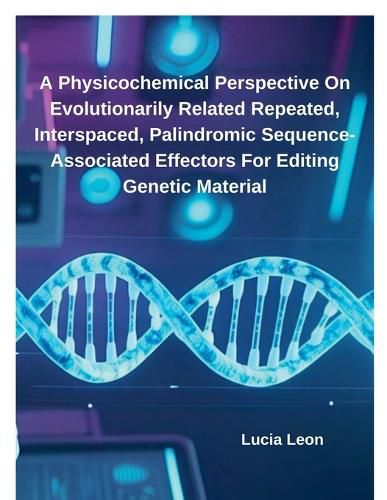Readings Newsletter
Become a Readings Member to make your shopping experience even easier.
Sign in or sign up for free!
You’re not far away from qualifying for FREE standard shipping within Australia
You’ve qualified for FREE standard shipping within Australia
The cart is loading…






This title is printed to order. This book may have been self-published. If so, we cannot guarantee the quality of the content. In the main most books will have gone through the editing process however some may not. We therefore suggest that you be aware of this before ordering this book. If in doubt check either the author or publisher’s details as we are unable to accept any returns unless they are faulty. Please contact us if you have any questions.
The CRISPR/Cas9 system is a naturally occurring, adaptive heritable immune system which defends invading phage attack and present in the whooping numbers of prokaryotes.This has been repurposed as a powerful tool which is guided by RNA and targets DNA for genome engineering which works by making site-specific DNA break and its subsequent repair by cellular machinery. The simplicity and multiplexity of the CRISPR system make it more sought after than other older counterparts viz. ZFNs and TALENs, and this has led to harnessing of CRISPR in gene therapy programmable gene regulation, cellular imagings, synthetic biology and nucleic acid detection among others. The CRISPR genome editing system includes an endonuclease, Cas9 derived from type II CRISPR-Cas system and a chimeric single-guide RNA (sgRNA). Cas9 and sgRNA forms ribonucleoprotein (RNP) binary complex and upon recognition of a protospacer adjacent motif (PAM) it binds to the substrate DNA, and forms ternary complex by unwinding the PAM upstream region with subsequent formation of R-loop. Successful R-loop formation displaces PAM- containing DNA strand and results in formation of a heteroduplex only when the target DNA strand finds complementary to sgRNA sequence. It is worth mentioning Cas9 remains inactive inthe absence of sgRNA and sgRNA binding induces structural changes in Cas9 from apo toactive form.
$9.00 standard shipping within Australia
FREE standard shipping within Australia for orders over $100.00
Express & International shipping calculated at checkout
This title is printed to order. This book may have been self-published. If so, we cannot guarantee the quality of the content. In the main most books will have gone through the editing process however some may not. We therefore suggest that you be aware of this before ordering this book. If in doubt check either the author or publisher’s details as we are unable to accept any returns unless they are faulty. Please contact us if you have any questions.
The CRISPR/Cas9 system is a naturally occurring, adaptive heritable immune system which defends invading phage attack and present in the whooping numbers of prokaryotes.This has been repurposed as a powerful tool which is guided by RNA and targets DNA for genome engineering which works by making site-specific DNA break and its subsequent repair by cellular machinery. The simplicity and multiplexity of the CRISPR system make it more sought after than other older counterparts viz. ZFNs and TALENs, and this has led to harnessing of CRISPR in gene therapy programmable gene regulation, cellular imagings, synthetic biology and nucleic acid detection among others. The CRISPR genome editing system includes an endonuclease, Cas9 derived from type II CRISPR-Cas system and a chimeric single-guide RNA (sgRNA). Cas9 and sgRNA forms ribonucleoprotein (RNP) binary complex and upon recognition of a protospacer adjacent motif (PAM) it binds to the substrate DNA, and forms ternary complex by unwinding the PAM upstream region with subsequent formation of R-loop. Successful R-loop formation displaces PAM- containing DNA strand and results in formation of a heteroduplex only when the target DNA strand finds complementary to sgRNA sequence. It is worth mentioning Cas9 remains inactive inthe absence of sgRNA and sgRNA binding induces structural changes in Cas9 from apo toactive form.